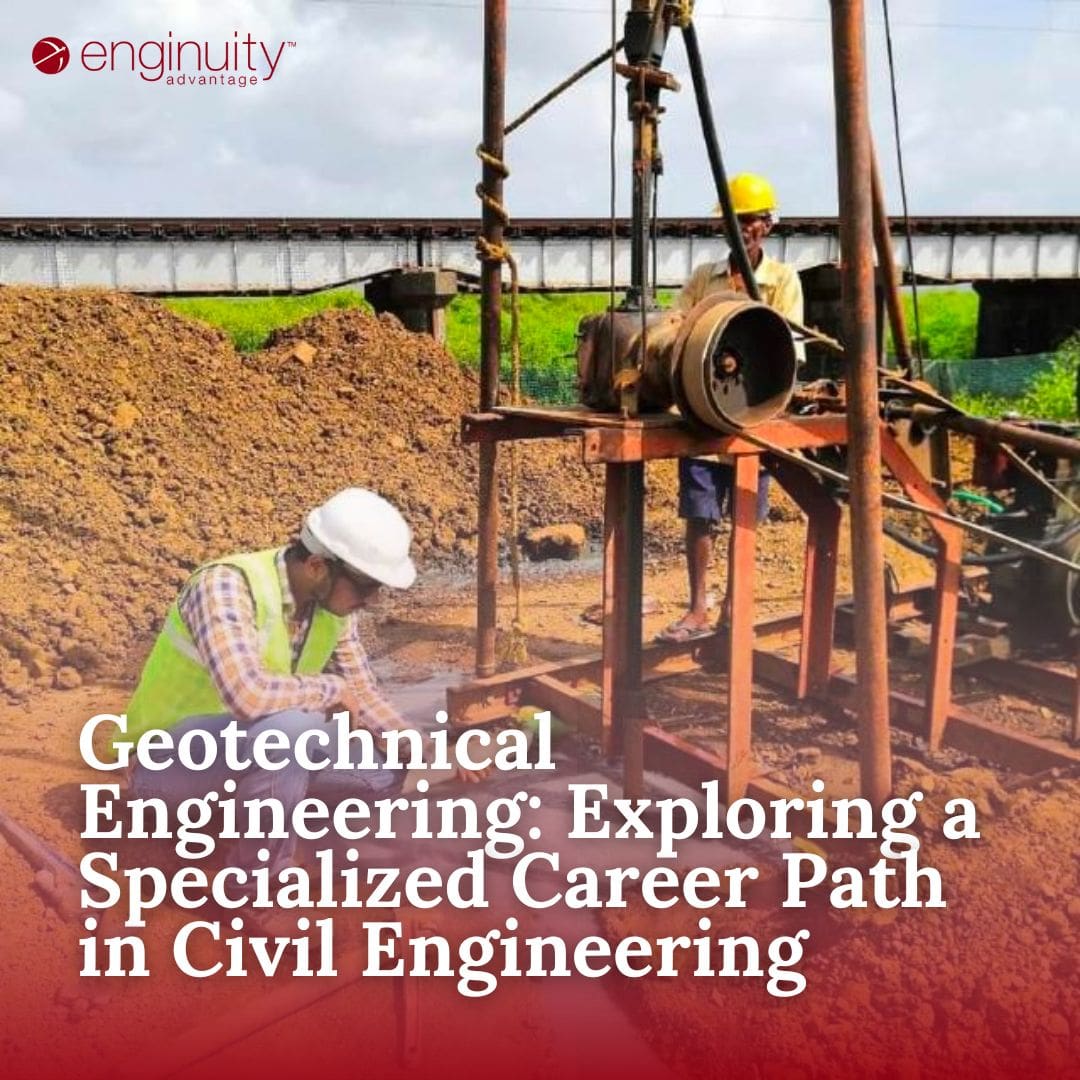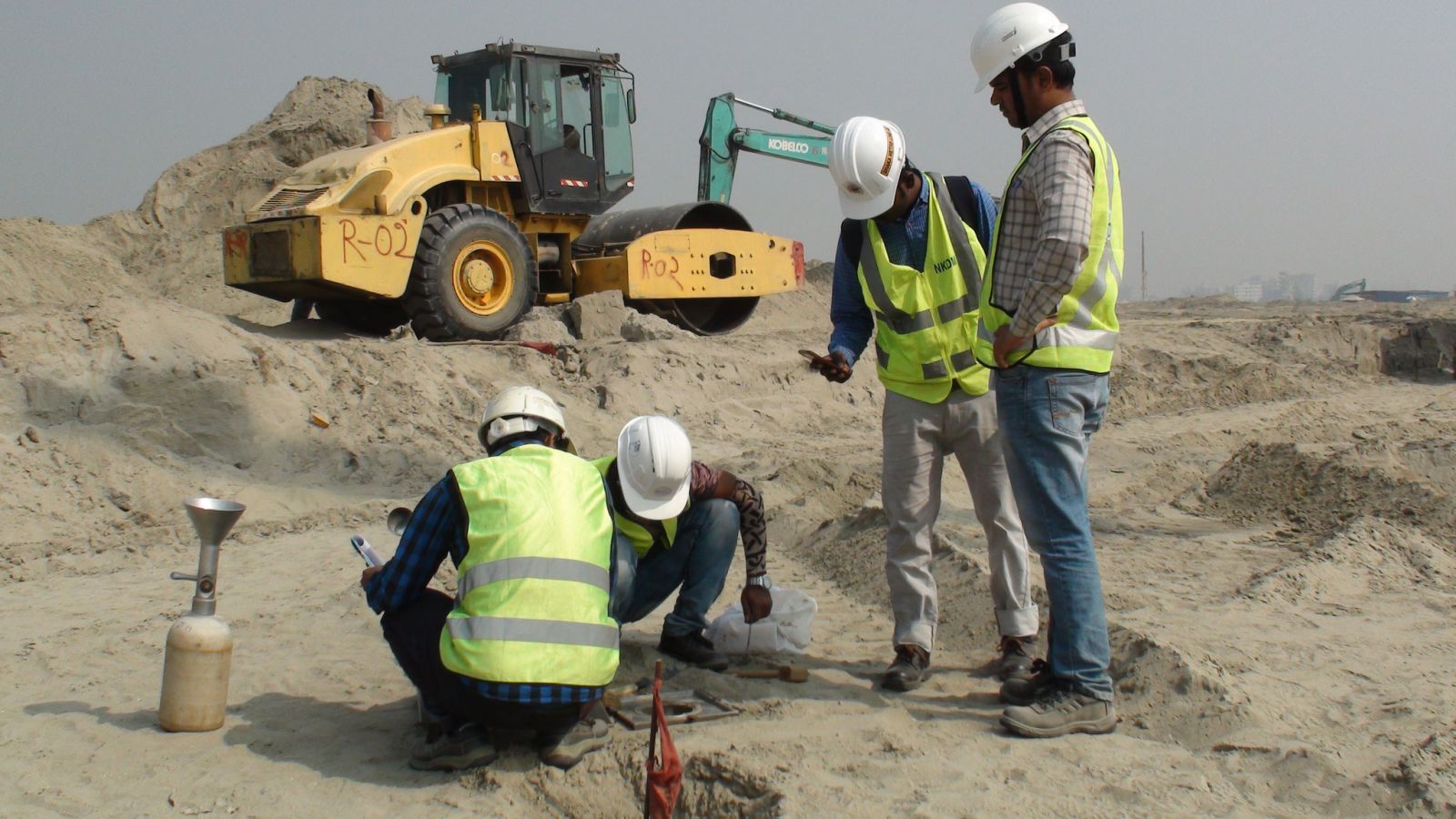Necessary Devices and Technologies for Modern Geotechnical Engineers
Wiki Article
The Interdisciplinary Approaches in the Geotechnical Market: Linking the Space In Between Design, Geology, and Environmental Scientific Research for Ideal Job End Results
The integration of design, geology, and environmental science within the geotechnical market is not merely advantageous; it is crucial for accomplishing optimal job results. This interdisciplinary cooperation promotes an extensive understanding of facility site conditions, permitting cutting-edge options to emerge. By checking out essential roles and successful instance research studies, we can uncover the dynamic interaction that drives job success. Nonetheless, difficulties continue to be in successfully managing these multidisciplinary efforts, elevating concerns concerning future patterns and possible advancements. What methods might arise to promote this essential partnership and boost the efficiency of geotechnical techniques?Importance of Interdisciplinary Collaboration
The significance of interdisciplinary collaboration in the geotechnical market can not be overstated. Efficient geotechnical jobs need the combination of varied experience from numerous areas, consisting of design, geology, and ecological scientific research. This cooperation guarantees that all aspects of a project are taken into consideration, bring about extensive options that resolve intricate challenges.Interdisciplinary partnership promotes advancement by enabling professionals to share insights and techniques that might not appear when operating in isolation (geo tech engineer). By leveraging the toughness of multiple disciplines, teams can recognize possible dangers, enhance design processes, and improve the sustainability of geotechnical projects. In addition, such collaboration advertises an alternative understanding of site-specific conditions, which is crucial for exact evaluation and decision-making.
The complexity of geotechnical projects necessitates a worked with method to analytic. When designers, geologists, and environmental scientists function with each other, they can create a natural strategy that straightens technical demands with ecological considerations and regulative conformity. This synergy not just improves task outcomes yet additionally contributes to the long-lasting strength of facilities. Eventually, interdisciplinary collaboration is essential for progressing finest practices and attaining excellence in the geotechnical market.
Key Functions of Each Technique
Collaboration amongst numerous disciplines is not just useful; it is essential for the successful implementation of geotechnical jobs. Each self-control-- engineering, geology, and environmental science-- plays a distinct yet interconnected role that contributes to predict efficiency and sustainability.Geotechnical designers are largely liable for making structures and making sure architectural stability. They examine dirt and rock homes to examine load-bearing abilities, offering necessary data for risk-free building and construction techniques. Their knowledge allows the formula of ingenious remedies to intricate difficulties.

Ecological scientists evaluate the potential influences of building on communities and water sources. They carry out ecological evaluations and create reduction methods to minimize unfavorable effects. By integrating ecological factors to consider, they ensure compliance with laws and advertise sustainability throughout the task lifecycle.
Study of Successful Assimilation
Successful assimilation of geotechnical self-controls can be exemplified via different study that highlight the effectiveness of synergy in attending to intricate engineering obstacles. One significant instance is the building of the Hong Kong-- Zhuhai-- Macau Bridge, where a collaborative method involving geotechnical design, geology, and ecological science was important. Engineers and rock hounds functioned in unison to evaluate the seabed problems and optimize the foundation layout, making sure security and reducing environmental effect.Another impactful case is the renovation of incline stability in the San Francisco Bay Location, where an interdisciplinary team incorporated geotechnical evaluation with environmental assessments. By incorporating geological studies and hydrological studies, the team effectively determined possible landslide dangers and executed efficient reduction actions, improving security and sustainability.
In addition, the redevelopment of Brownfield websites commonly needs a multidisciplinary method. In one situation in Chicago, collaboration among geotechnical engineers, environmental scientists, and urban coordinators led to the effective removal of polluted dirt, permitting for the secure makeover of the website right into an area park. These study highlight that interdisciplinary cooperation not just addresses technological challenges but likewise promotes cutting-edge solutions that benefit both communities and jobs.
Obstacles in Multidisciplinary Projects

Additionally, coordinating timetables and operations among numerous groups can be problematic, specifically when each self-control has special project landmarks and deliverables. This imbalance can result in hold-ups and raised expenses. The difficulty of resource allocation also looms huge; ensuring that specialized experience is readily available at important points requires mindful preparation and foresight.
Finally, regulatory conformity presents another significant challenge. Each discipline might deal with different governing structures, and lining up these requirements to fulfill task goals can be intricate and time-consuming. Dealing with these difficulties requires solid leadership and efficient interaction strategies to foster partnership and make sure that multidisciplinary teams work cohesively in the direction of shared objectives.
Future Trends in Geotechnical Practices
As the geotechnical industry develops, arising fads are reshaping practices to attend to the obstacles encountered in multidisciplinary projects - tailings engineer. One substantial fad is the increased integration of sophisticated technologies, such as synthetic knowledge and artificial intelligence, right into geotechnical evaluation and design. These innovations improve anticipating modeling and risk analysis, enabling engineers to make more enlightened choices throughout the task lifecycle
Furthermore, the fostering of electronic doubles and real-time monitoring systems is ending up being extra common. These devices promote ongoing evaluation of dirt conditions and structural efficiency, allowing for timely treatments when problems emerge.
Verdict
In conclusion, the assimilation of design, geology, and environmental science is essential for accomplishing ideal outcomes in the geotechnical sector. Effective case studies highlight the advantages of this technique, while acknowledging the difficulties dealt with in multidisciplinary jobs.The combination of engineering, geology, and environmental scientific research within the geotechnical geotechnical engineers market is not merely advantageous; it is vital for accomplishing optimal task results. Effective geotechnical projects call for the combination of varied experience from different fields, consisting of engineering, geology, and environmental scientific research.Browsing the intricacies of multidisciplinary jobs in the geotechnical sector presents numerous significant challenges.As the geotechnical industry develops, arising trends are improving practices to address the obstacles dealt with in multidisciplinary projects. Geotechnical designers are significantly teaming up with ecological scientists to guarantee that tasks align with sustainability goals and conform with governing requirements.
Report this wiki page